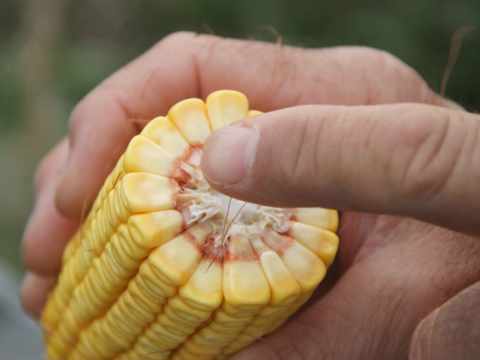Explore our blog featuring articles about farming and irrigation tips and tricks!
How To Estimate Corn Yield

By: Daniel Davidson
August makes for a lot of interest in yield estimates. Recent USDA and other estimates have many of us wondering how many bushels are out there.
With all the hot and dry weather my area of eastern Nebraska experienced from late May to mid-August, the loss of corn yield has been on my mind all summer.
When estimating corn yield, a count of 32,000 ears (population), 560 kernels per ear and 90,000 kernels per bushel equals 200 bushels. I and my neighbors were out last week checking ears and counts and assumed a 32,000 population after dropping 34,000 at planting. We discovered that all fields seemed to be averaging around 550 kernels per ear, which put the crop in the 200-bushel range. Yields aren’t as good as 2016 but better than we expected. Ear size was a surprise considering how dry and hot it was in July, and tip-back was less than expected. What we don’t know yet is kernel depth and plumpness. But with the rains and cool weather after mid-August, I am no longer worried.
The most well-known method to estimate corn yield was developed by the University of Illinois. The Yield Component Method is simple and involves using routine counts (not size or weight) on a thousandth of an acre and 90,000 kernels per bushel.
In 30-inch or twin rows, sample a row length of 17 feet, 5 inches. In 15- and 20-inch rows, sample 34 feet, 10 inches and 26 feet, 2 inches, respectively. In 12-inch rows, that one-thousandth of an acre is 43 feet, 7 inches of row.
Stay up to date on all T-L news and get alerts on special pricing!


